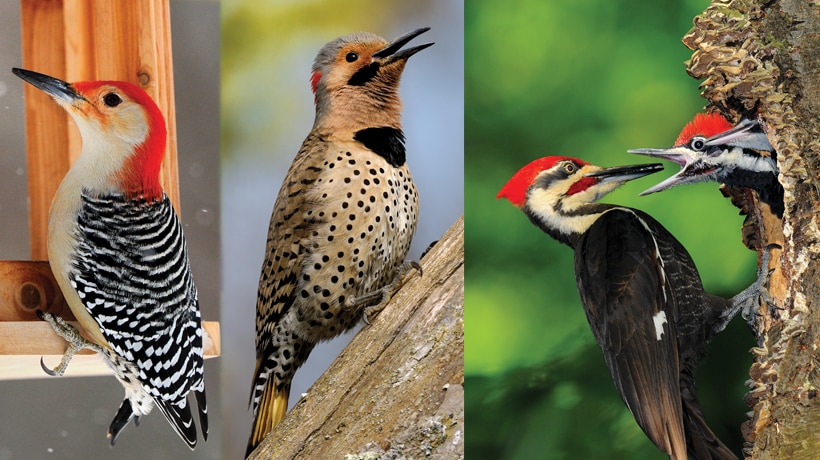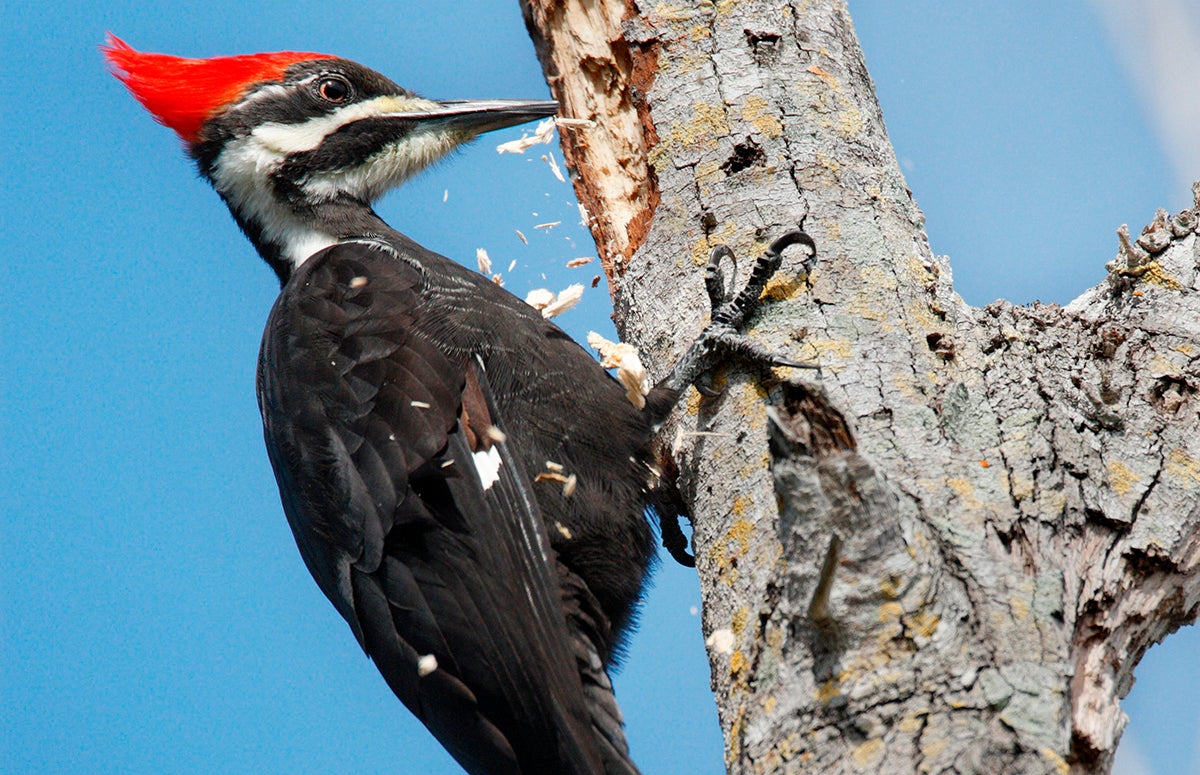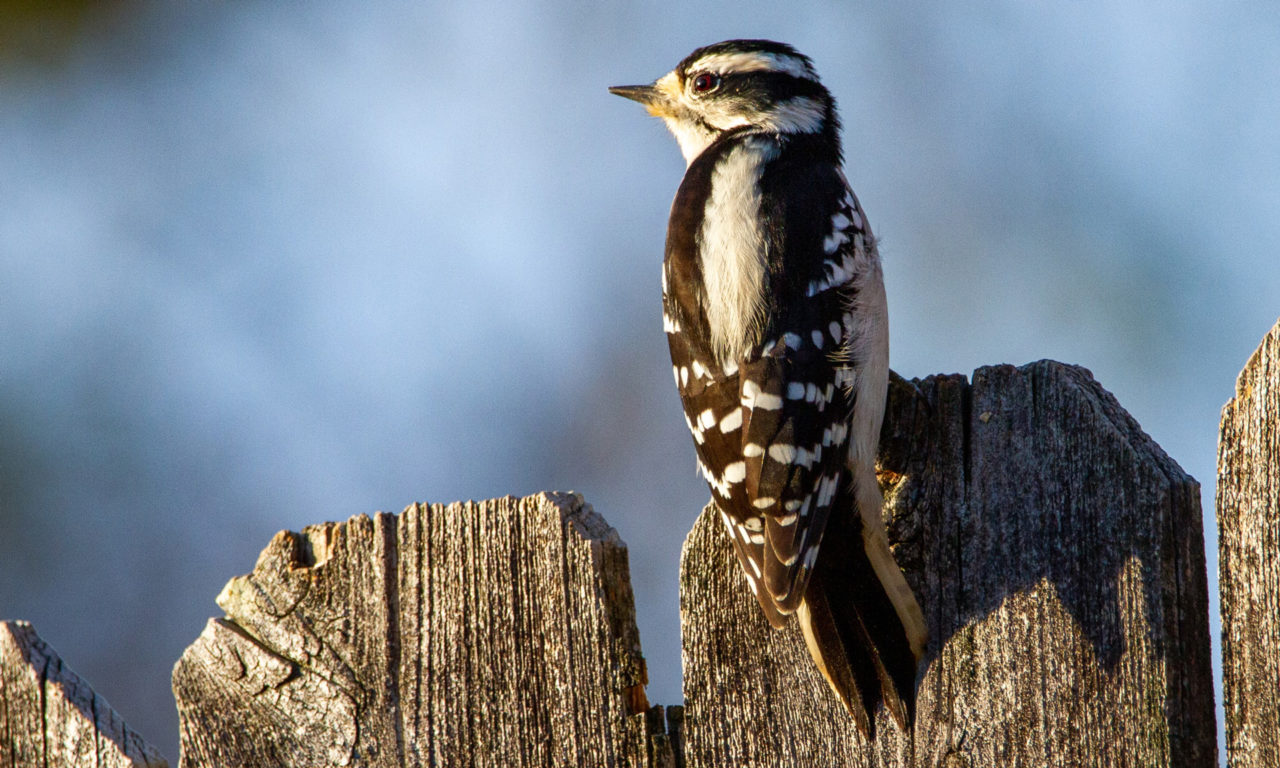Woodpeckers in Florida: Identification Tips and Habitat Preferences
Woodpeckers in Florida: Identification Tips and Habitat Preferences
Blog Article
Woodpeckers: A Comprehensive Overview to Comprehending These One-of-a-kind Birds
Woodpeckers, with their unique habits and physical attributes, have actually long mesmerized the inquisitiveness of ornithologists and nature enthusiasts alike. As we check out the elaborate makeup, varied species, and environmental importance of woodpeckers, a much deeper appreciation for these unique birds and the enigmas they hold unravels.

Woodpeckers' Drumming Habits
Woodpeckers show a balanced and exact drumming actions that serves different vital functions in their lives. This actions is largely connected with communication, territory defense, and foraging. The distinctive drumming audio is produced by the quick pecking of their beaks against difficult surface areas such as tree trunks, branches, or even steel items.
Communication is an important element of woodpecker behavior, and drumming plays a substantial role in this process. Woodpeckers use drumming to establish their presence, bring in mates, and preserve contact with their partners and spawn. The regularity, intensity, and period of drumming sequences convey specific messages to other woodpeckers in the location.
In enhancement to communication, woodpeckers make use of drumming behavior for area protection. Woodpeckers in Florida. The loud and repetitive drumming offers as a warning to possible burglars, signifying that the location is currently claimed. By establishing their area via drumming, woodpeckers decrease the probability of conflicts over beneficial sources such as food and nesting websites
In addition, woodpeckers also employ drumming as a foraging method. The rhythmic pecking assists them situate insects concealing beneath the bark of trees by developing vibrations that interfere with the prey's camouflage. This habits showcases the versatility and ingenuity of woodpeckers in using their drumming abilities for several necessary objectives.
Special Adaptations for Tree Climbing
Having grasped the art of drumming to interact, safeguard region, and forage, woodpeckers have evolved unique adjustments that facilitate their amazing climbing abilities in their arboreal environments. Woodpeckers have zygodactyl feet, with 2 toes pointing onward and 2 toes aiming backward. These tail feathers give security and balance, making it possible for woodpeckers to navigate up tree trunks with precision and dexterity.
In addition, woodpeckers have powerful neck muscular tissues and an unique head structure that help in their climbing capacities. Their strong neck muscles allow them to quickly eat tree bark without experiencing whiplash, while their thick skull and small brain serve as shock absorbers, securing them from the effect of repeated drumming. These adjustments jointly enable woodpeckers to navigate the upright globe of trees with effectiveness and grace.

Function of Woodpeckers in Ecosystems
By foraging for insects under the bark of trees, woodpeckers aid manage bug populations, stopping outbreaks that could harm the total health and wellness of the forest. In addition, woodpeckers produce cavities in trees that serve as essential nesting websites for a variety of various other bird types, advertising biodiversity within the community.
In addition, the drumming and articulations of woodpeckers play an important duty in communication and region establishment. These noises not just offer to attract friends yet likewise assist define limits between various woodpecker territories, decreasing problems and promoting an unified coexistence within the forest neighborhood. Overall, the visibility of woodpeckers in woodland environments highlights their value as keystone types, influencing the dynamics and functioning of these environments in multifaceted methods.
Makeup: Specialized Beaks and Feet
In the detailed internet of woodland ecosystems, the specialized beaks and feet of woodpeckers are essential adjustments that allow them to satisfy their essential eco-friendly roles. Woodpeckers have one-of-a-kind physiological attributes that are particularly designed to assist them in their foraging and nesting behaviors.
One of the most distinguishing characteristic of woodpeckers is their solid, Your Domain Name chisel-shaped beaks. These beaks are flawlessly adjusted for boring right into wood to reveal pests, larvae, and sap concealed under the bark of trees. The solid muscular tissues and tough framework of their beaks enable woodpeckers to eat a price of approximately 20 times per secondly without triggering damage to their skulls.
Furthermore, woodpeckers have specialized feet that help in their acrobatic climbing up a knockout post abilities. Their feet have 2 toes pointing onward and two toes pointing backwards, offering a strong grasp on upright surface areas (Woodpeckers in Florida). This unique foot plan, in addition to stiff tail feathers that work as a helpful prop, enables woodpeckers to stick to tree trunks and branches easily while they browse for food or dig deep into nesting dental caries
Woodpecker Variety Variety
Woodpeckers are a diverse team of birds found throughout various ecosystems worldwide, with over 200 known species showing adjustments to various environments. Woodpeckers have developed to populate an array of atmospheres, from forests and timberlands to meadows and deserts, each providing unique obstacles that have affected the development of distinctive woodpecker types.
One more adding factor to woodpecker species diversity is their specialized feeding behaviors. Various species have actually progressed to exploit numerous food sources, such as pests, navigate to this website tree sap, fruits, and nuts, causing the development of details adjustments in beak form, dimension, and toughness. These adjustments enable woodpeckers to forage efficiently in their respective habitats, reducing competitors among species and advertising niche distinction. Furthermore, geographical seclusion and historical variables have played a role in forming the circulation and diversity of woodpecker varieties, resulting in the vast array of specialized adjustments seen in these interesting birds.

Final Thought
To conclude, woodpeckers are interesting birds that display special drumming behavior, specialized adaptations for tree climbing, and play important functions in ecosystems. Their makeup, consisting of specialized beaks and feet, allows them to prosper in their setting. With a diverse series of woodpecker types located worldwide, these birds are necessary for keeping the wellness and equilibrium of woodlands and woodlands. Comprehending and valuing the intricacies of woodpeckers can provide beneficial understandings into the all-natural world.
Report this page